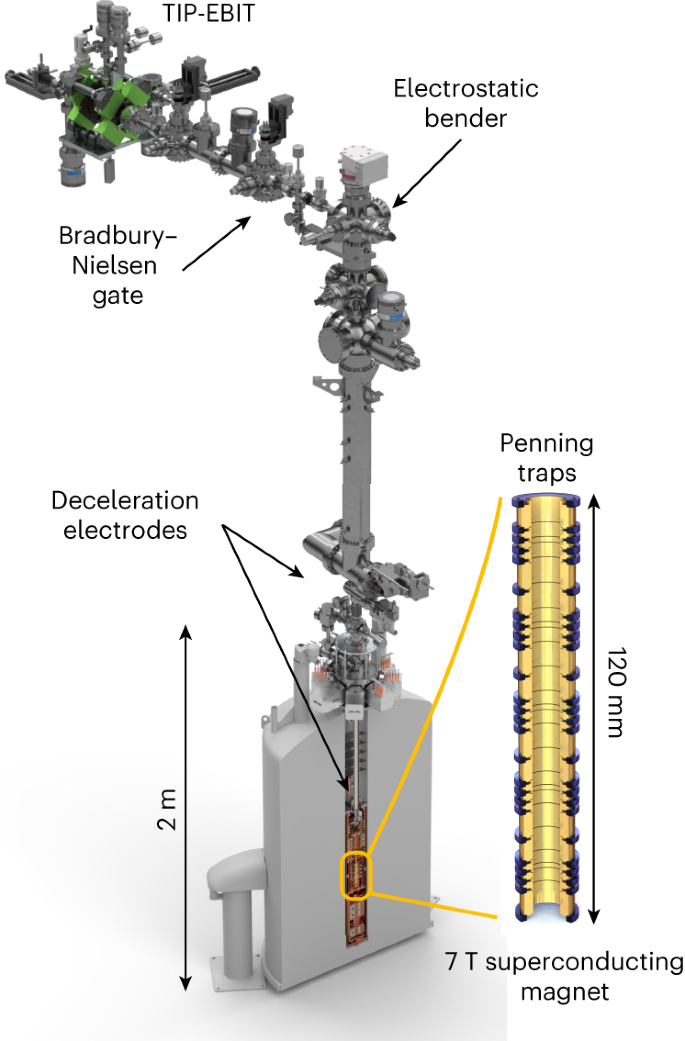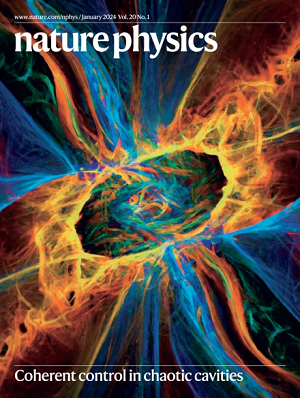Penning-trap measurement of the Q value of electron capture in 163Ho for the determination of the electron neutrino mass
IF 17.6
1区 物理与天体物理
Q1 PHYSICS, MULTIDISCIPLINARY
引用次数: 0
Abstract
The investigation of the absolute scale of the effective neutrino mass remains challenging due to the exclusively weak interaction of neutrinos with all known particles in the standard model of particle physics. At present, the most precise and least-model-dependent upper limit on the electron antineutrino mass is set by the Karlsruhe Tritium Neutrino Experiment (KATRIN) from the analysis of the tritium β-decay. Another promising approach is the electron capture in 163Ho, which is under investigation using microcalorimetry by the Electron Capture in Holmium (ECHo) and HOLMES collaborations. An independently measured Q value for this process is vital for the assessment of systematic uncertainties in the neutrino mass determination. Here we report a direct, independent determination of this Q value by measuring the free-space cyclotron frequency ratio of highly charged ions of 163Ho and 163Dy in the Penning-trap experiment PENTATRAP. Combining this ratio with atomic physics calculations of the electronic binding energies yields a Q value of 2,863.2 ± 0.6 eV c−2, which represents a more than 50-fold improvement over the state of the art. This will enable the determination of the electron neutrino mass on a sub-electronvolt level from the analysis of the electron capture in 163Ho. Electron capture in 163Ho can be used to determine the electron neutrino mass. The Q value of this process is crucial for the evaluation of the systematic uncertainty in such a measurement, and a 50-fold improvement is now reported.


潘宁陷阱测量 163Ho 中电子俘获的 Q 值以确定电子中微子质量
由于中微子与粒子物理标准模型中所有已知粒子的相互作用都很微弱,因此对有效中微子质量绝对尺度的研究仍然具有挑战性。目前,卡尔斯鲁厄氚中微子实验(KATRIN)通过分析氚的β衰变,为电子反中微子质量设定了最精确、最不依赖模型的上限。另一个很有希望的方法是 163Ho 中的电子俘获,钬中的电子俘获(ECHo)和 HOLMES 协作小组正在使用微量热仪对这一过程进行研究。独立测量这一过程的 Q 值对于评估中微子质量测定中的系统不确定性至关重要。在这里,我们报告了通过测量彭宁阱实验 PENTATRAP 中 163Ho 和 163Dy 的高电荷离子的自由空间回旋频率比,直接、独立地测定了该 Q 值。将这一比率与电子结合能的原子物理学计算相结合,得出的 Q 值为 2,863.2 ± 0.6 eV c-2,比目前的技术水平提高了 50 多倍。这将使我们能够通过分析 163Ho 中的电子俘获来确定亚电子伏特级的电子中微子质量。
本文章由计算机程序翻译,如有差异,请以英文原文为准。
求助全文
约1分钟内获得全文
求助全文
来源期刊

Nature Physics
物理-物理:综合
CiteScore
30.40
自引率
2.00%
发文量
349
审稿时长
4-8 weeks
期刊介绍:
Nature Physics is dedicated to publishing top-tier original research in physics with a fair and rigorous review process. It provides high visibility and access to a broad readership, maintaining high standards in copy editing and production, ensuring rapid publication, and maintaining independence from academic societies and other vested interests.
The journal presents two main research paper formats: Letters and Articles. Alongside primary research, Nature Physics serves as a central source for valuable information within the physics community through Review Articles, News & Views, Research Highlights covering crucial developments across the physics literature, Commentaries, Book Reviews, and Correspondence.
 求助内容:
求助内容: 应助结果提醒方式:
应助结果提醒方式:


